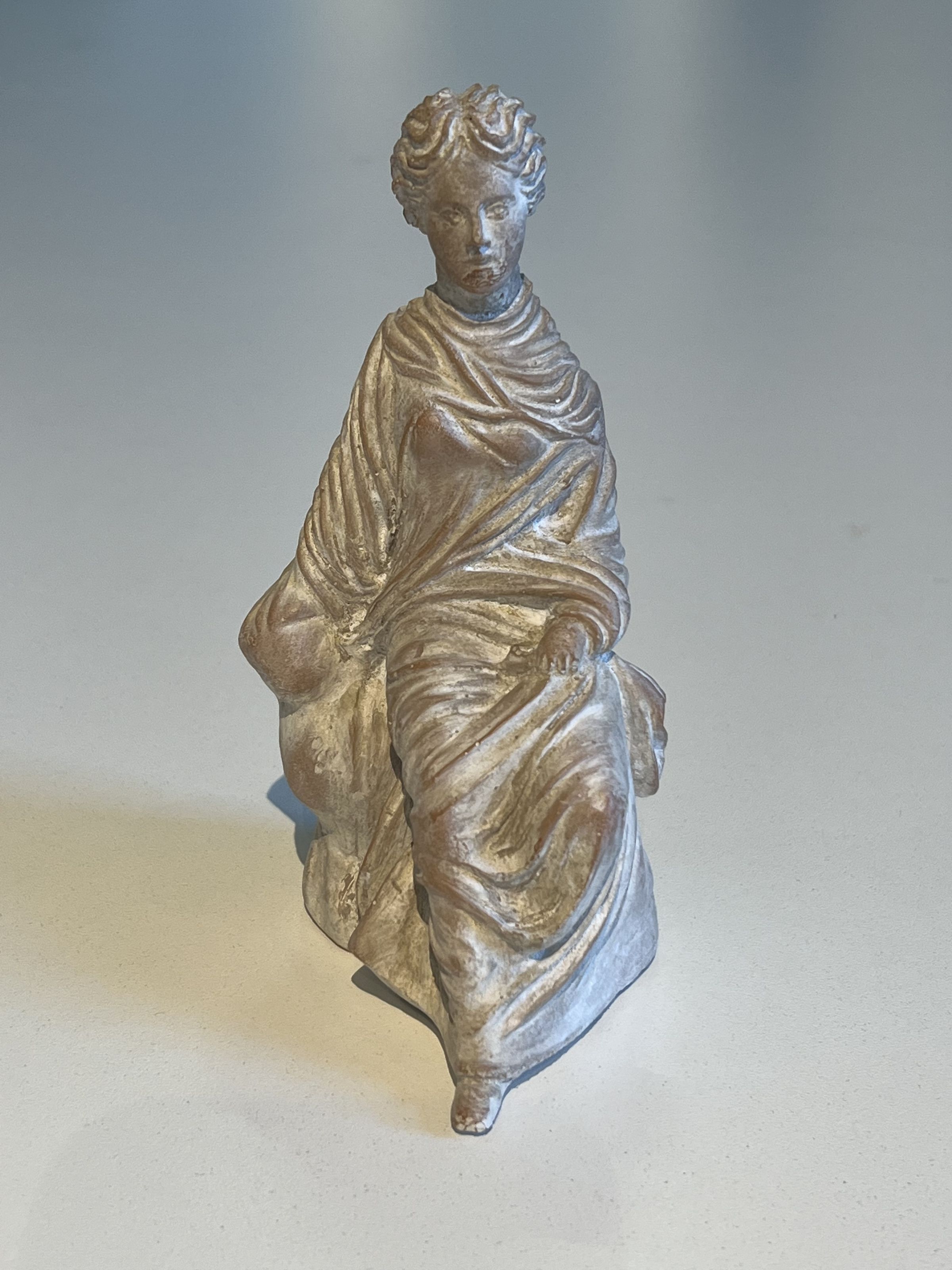Seated Tanagra Figurine
Name/Title
Seated Tanagra FigurineEntry/Object ID
22G03259Description
Female figure seated on a rock wearing a chiton and himation. Her left hand protrudes from the folds of her dress and holds the fabric on her right thigh. Her left foot is drawn back under her and her right leg extends with her right foot protruding from beneath her dress. Resin copy of terracotta original.Type of Sculpture
StatuetteArtwork Details
Medium
TerracottaSubject
Tanagra FigurineContext
Named after the Tanagra region of Boeotia, Greece where figures like these were discovered in the 19th century, many having been found in the context of graves. Most of the figurines, also referred to as “Tanagras”, depict fashionable women and girls, occasionally figures representing characters from the New Comedy plays of Menander, and on rare occasions young men and boys. These statuettes preserve the styles of dress and accessories worn by women and girls of the Hellenistic period. Bright colours were used to render naturalistic attributes using water-soluble paints. These small figurines approximate the colours that would have been used on larger marble sculptures. Production of the Tanagras began in the last quarter of the 4th century BCE and production sites have been found all across the ancient Greek world, with some of the earliest examples located in Athens. The figures were made by pressing clay into two separate concave molds, one for the front and one for the back of the body. Any projecting arms and heads were attached separately before being fired in a kiln. This allowed for great variation and customization in the look of the figures. They are believed to have been largely made and used as votive offerings. By the end of the 4th century BCE they ceased to be objects of reverence, and were manufactured simply as representations of women and girls in everyday life. The hairstyle of this figurine is parted in the centre with symmetrical waves of hair framing the face, and pulled back into a bun. This hairstyle is common among female portrait statues and gravestones during the Hellenistic Period. This hairstyle is also reflected on coins depicting Hellenistic Queens including Ptolemaic Queen Arsinoe II of Egypt (273 - 270 or 268 BCE), and Queen Philistis of Sicily, Syracuse (240 - 214 BCE). This figure is seated on a rock, representing the natural world and emphasizes the fact that Tanagra figurines were both an indication of women being more visible in the public sphere.Collection
Hellenistic GreeceMade/Created
Date made
circa 300 BCE - circa 200 BCETime Period
HellenisticEthnography
Culture/Tribe
Greek - Hellenistic

